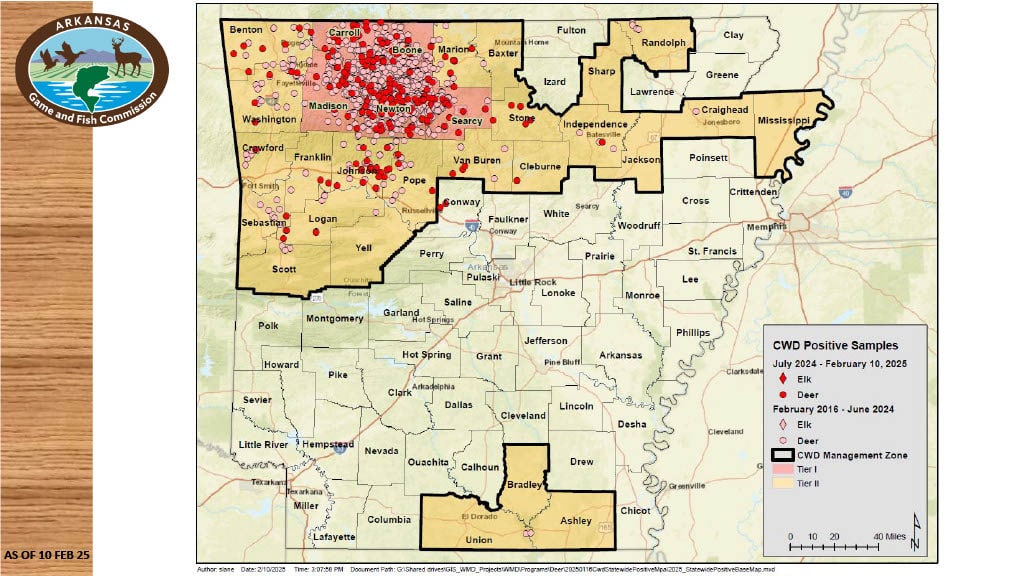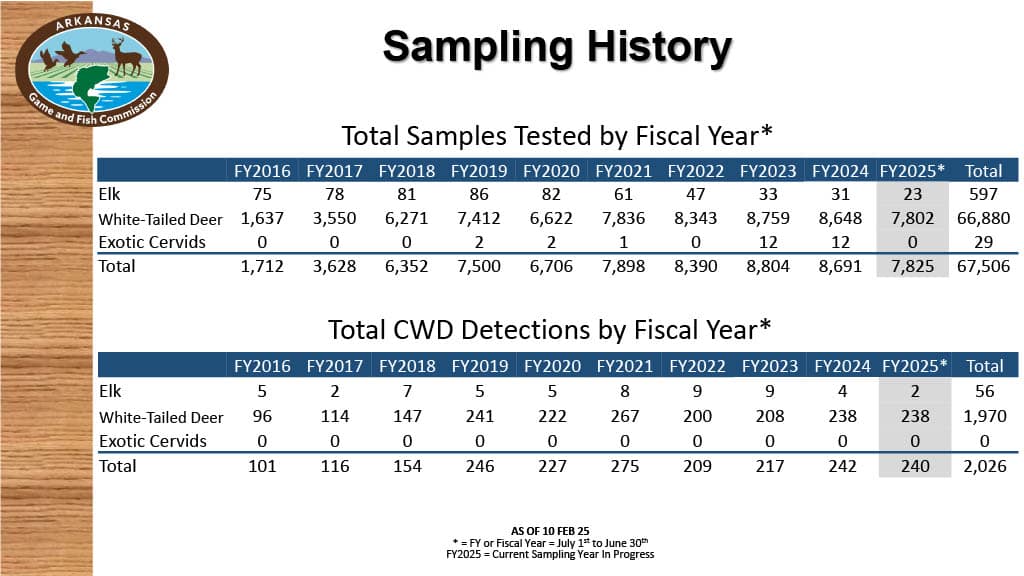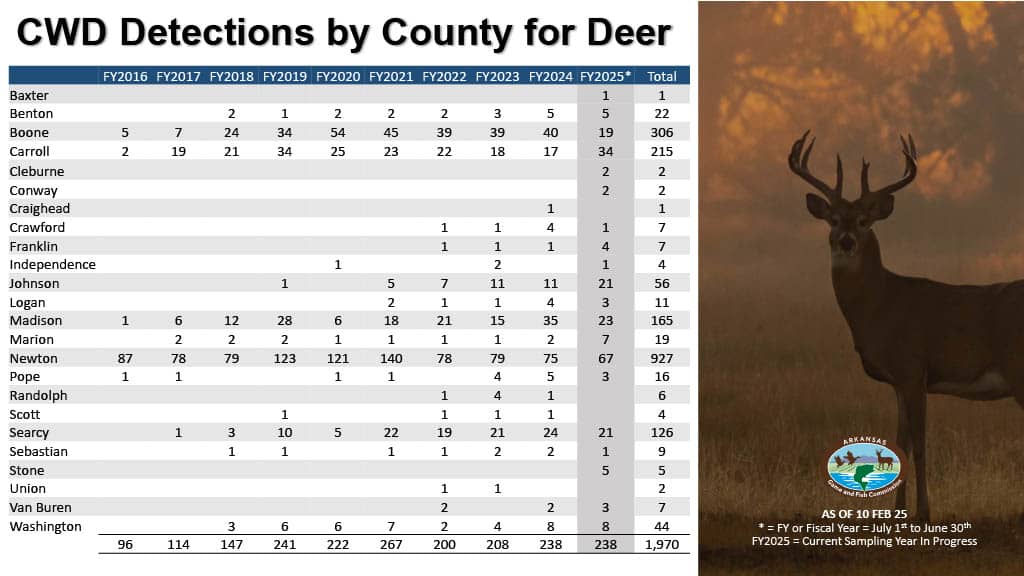CWD in Arkansas
Where in Arkansas Has CWD Been Found?
In February 2016, an elk harvested in the fall of 2015 near Pruitt in Newton County tested positive for CWD. This was the first documented case of the disease in the State of Arkansas. Also in February 2016, a white-tailed deer was found sick near Ponca in Newton County and tested positive CWD. An initial sampling effort in the vicinity of these cases found a total CWD prevalence of 23 percent in white-tailed deer from northern Newton County. Additional CWD positives have been found in Baxter, Benton, Boone, Carroll, Cleburne, Conway, Craighead, Crawford, Franklin, Independence, Johnson, Logan, Madison, Marion, Pope, Randolph, Scott, Searcy, Sebastian, Stone, Union, Van Buren and Washington counties. Visit CWD related wildlife and hunting regulations for the entire CWD Management Zone and associated regulations. AGFC continues their surveillance activities and encourages Arkansans to report all sick deer and elk, 833-356-0824.
Can CWD Spread to Humans or Livestock?
Currently, there is no scientific evidence of CWD transmission to humans, pets or livestock under natural conditions. However, feeding domestic animals any meat from sick or diseased wildlife is not recommended.
The Centers for Disease Control and Prevention strongly recommends having your deer or elk tested when hunting in areas where CWD is known to be present before eating the meat.
Visit the Centers for Disease Control and Prevention for more information about CWD from the Centers for Disease Control.
What Can Be Done to Manage CWD?
Research suggests the CWD prion can be passed from infected cervids to healthy cervids through contact with feces, urine, or saliva as well as contact with CWD-infected carcasses or contaminated soil. Practices which unnecessarily congregate cervids or the improper disposal of carcasses both have the potential to increase CWD transmission. Therefore, steps to reduce the spread of CWD include avoiding activities which congregate deer and elk, reducing deer and elk densities, limiting the movement of potentially infected materials (i.e. carcasses) around the state, and limiting the dispersal of infected animals. In order to slow the spread of CWD within Arkansas, the AGFC has enacted regulations to help slow the spread of CWD in Arkansas.
What can Hunters do to Help?
There are many actions hunters can take voluntarily to help fight this serious disease.
- Get Your Deer Tested for CWD — Hunters should continue hunting, and increase their harvest if possible. Reducing the density of deer can help slow the spread within the local herd. By participating in voluntary testing, hunters also assist AGFC in keeping tabs on the status of CWD in Arkansas.
- Don’t Move the Carcass to New Areas — The most effective management tool for CWD is to prevent its spread. Avoiding the introduction of infected deer, either live or dead, as well as other potentially infectious materials prevents disease introduction through human activities. Hunters should limit moving any deer from an area known to have CWD to prevent its spread on the landscape.
- Keep Hunting — Reducing population densities in affected areas can help slow the natural spread of CWD.
- Don’t Bait or Offer Supplemental Feed — Activities that artificially congregate deer and elk can increase disease transmission and hinder other management efforts. While food plots and other tactics that mimic natural food sources are OK, it is highly recommended not to bait or offer supplemental feed using feeders. If baiting is necessary for hunting, the use of a feeder that broadcasts the grain across a large area is preferred.
- Report Sick or Dead Deer — Call the AGFC’s radio room at 833-356-0824 with exact locations of any deer found in the wild displaying clinical signs of CWD.
Learn more about CWD and its impacts throughout North America at www.cwd-info.org




